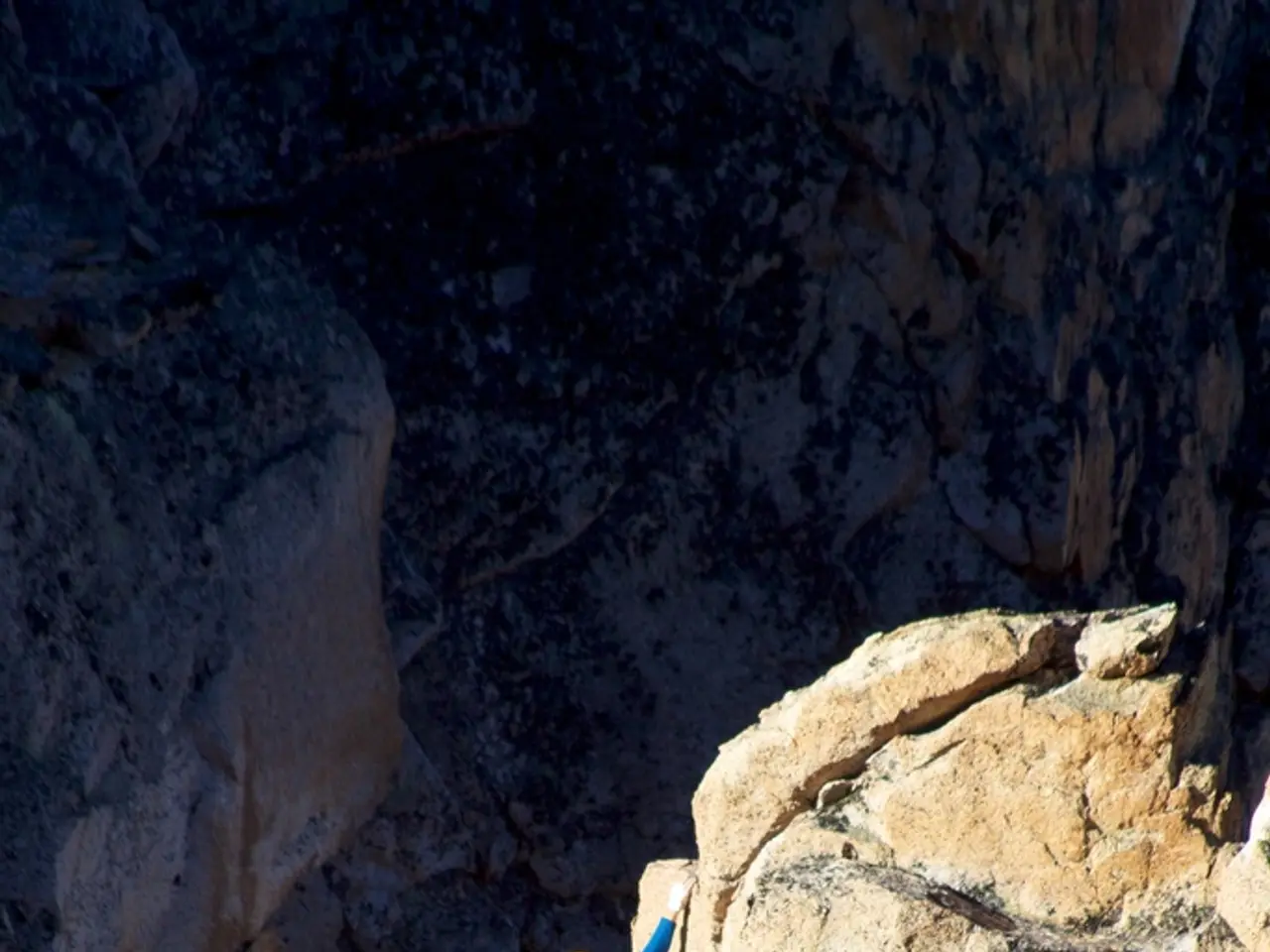Mountaineer plunges vertically 10 meters onto a glacier
In a harrowing incident on Friday, a mountain climber fell headfirst into a crevasse on Germany's largest glacier, the Höllentalferner, located on the Zugspitze—the country's highest peak at over 2,962 meters. The rescued climber was already hypothermic when freed from the crevasse, highlighting the precarious nature of glacier hiking.
The incident occurred during a day of beautiful weather, attracting large crowds to the glacier. However, the steep terrain and hidden crevasses make for a dangerous combination, as the fallen climber discovered. The climber lost his way in the fog and ended up in steep terrain, leading to the unfortunate accident.
Thankfully, another climber noticed the fallen man and alerted the mountain rescue service, allowing for a timely response. The operations leader of the Grainau mountain rescue service, Willi Kraus, stated that the man was lucky to be seen by another climber.
Glacier hiking is a demanding outdoor activity with specific risks that can lead to difficult and complex rescue operations. Cracks, hidden crevasses, icefalls, and changing snow bridges increase the risk of falls and entrapment. Sudden weather changes, fog, and whiteout conditions can disorient even experienced climbers. The steep, glaciated terrain also increases the risk of avalanches and falling rocks, especially in spring and early summer.
While exact numbers for Zugspitze-specific rescue operations are not always published, the German Alpine Association and mountain rescue organizations (such as the Bergwacht) regularly respond to calls in the region, especially during peak hiking seasons. Most incidents involve slips, falls, lost hikers, or medical emergencies. Glacier-related rescues are less frequent but tend to be more dangerous and resource-intensive due to the technical skills and equipment required.
To minimise the likelihood of difficult rescues, it is essential to follow specific safety measures. Proper equipment, such as crampons, ice axes, helmets, and ropes, is essential for glacier travel. Continuously monitoring weather forecasts and being prepared to turn back if conditions deteriorate is also crucial. Route planning, studying maps, using GPS devices, and knowing the location of emergency huts (such as the Reintalangerhütte) are all important steps to take.
Travelling in groups is another key safety measure. Groups provide mutual support and can summon help more effectively. For those unfamiliar with glacier terrain, hiring a certified mountain guide is strongly recommended. Knowledge of rescue techniques (self-rescue and group rescue) is crucial for all participants. Carrying a first aid kit, emergency shelter, satellite communication device, and knowing the local emergency numbers are also essential.
Despite the risks, glacier hiking around Zugspitze is rewarding for those who are well-prepared and respect the alpine risks. The glacier has become steeper due to climate change and is one of only four remaining glaciers in Germany. The climber who fell into the crevasse was flown to Klinikum Garmisch-Partenkirchen for medical treatment, a reminder of the dangers that lurk even on a beautiful day in the mountains.
In the realm of general-news, the latest incident involving a mountain climber in Germany serves as a grim reminder of the dangers associated with glacier hiking, specifically on Germany's largest glacier, the Höllentalferner. The sports community and weather enthusiasts alike should be aware that the beautiful weather, while inviting, can conceal hidden dangers, such as steep terrain and lurking crevasses, as exemplified by the unfortunate accident that occurred.




